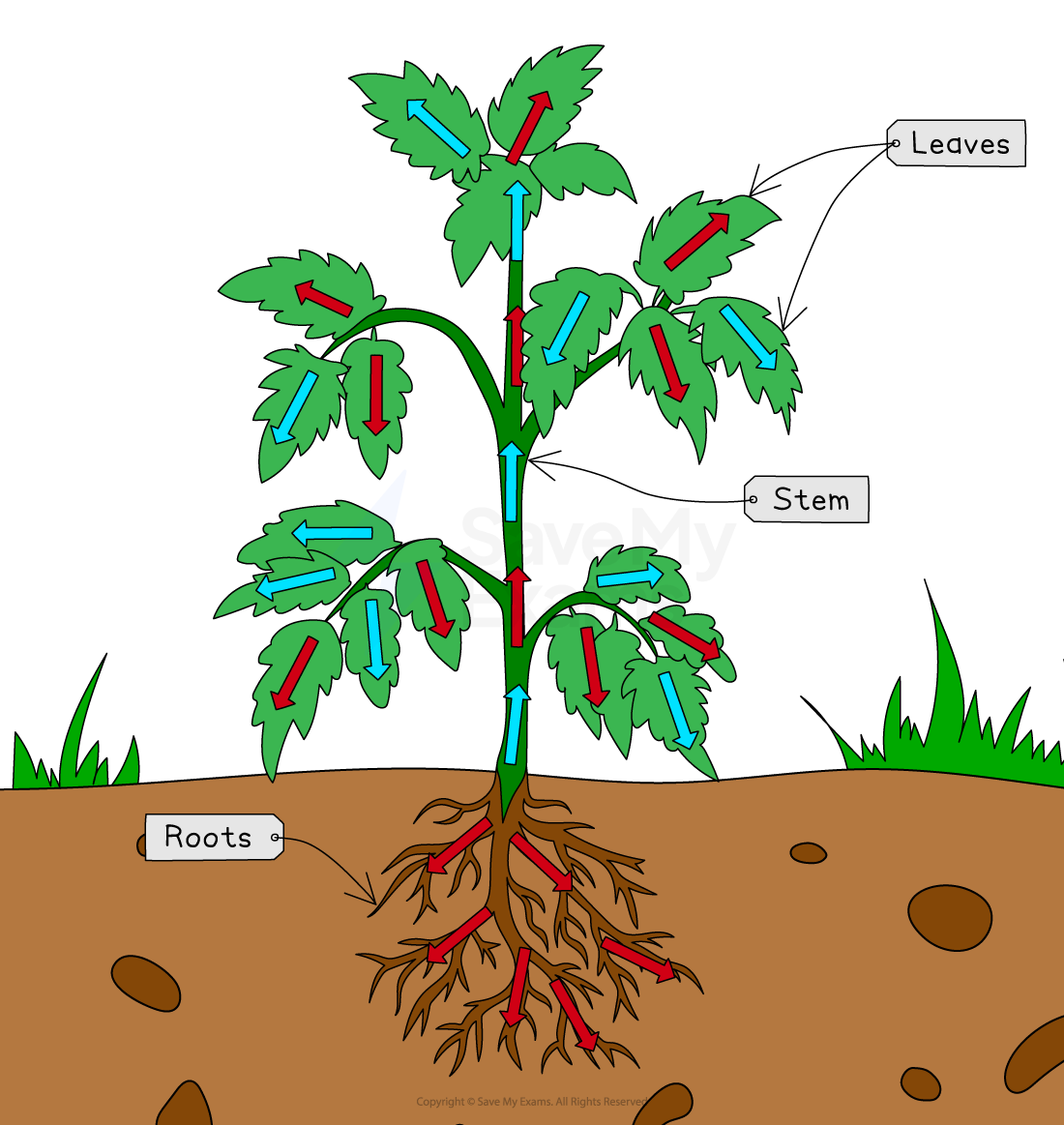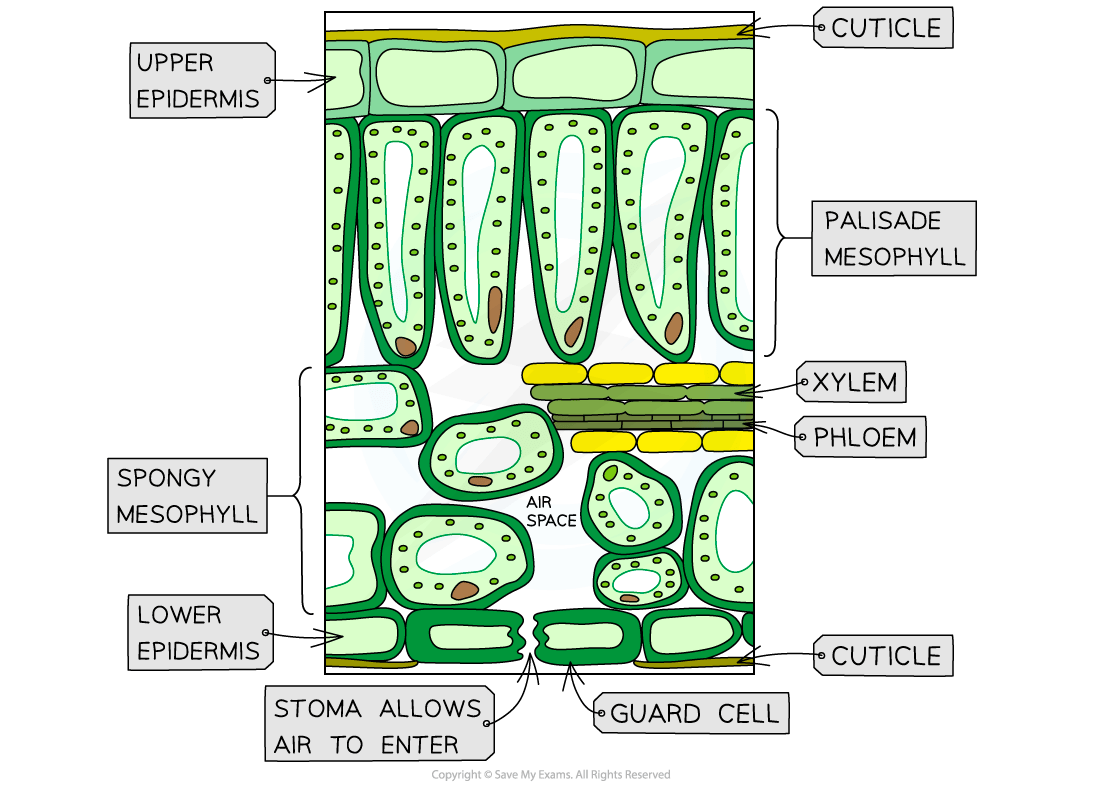Transport System Structure in Plants (SQA National 5 Biology): Revision Note
Exam code: X807 75
Transport system structure in plants
Multicellular organisms usually have transport systems, as diffusion, osmosis and active transport are too slow to meet all of a larger organism’s needs
In plants, transport systems are required to move substances between plant organs, including:
roots
stems
leaves
Transport systems in plants allow:
movement of water and mineral ions from the roots to the stems and the leaves
movement of sugars and amino acids from where they are produced or stored, to where they are needed

Leaf structure
Leaves are plant organs; they are adapted to maximise the rate of photosynthesis

Structure | Function |
|---|---|
Cuticle | A waxy layer that reduces evaporation from leaf surfaces |
Epidermis (upper and lower) | A thin layer of cells that are transparent to allow light to reach photosynthesising cells |
Palisade mesophyll | A layer of palisade cells at the top of the leaf that contains many chloroplasts to maximise light absorption |
Spongy mesophyll | A layer of loosely packed, photosynthesising cells with large air spaces to maximise diffusion of CO₂ and O₂ |
Vein (contains xylem and phloem) | Xylem: transports water from the roots to the leaves Phloem: transports the products of photosynthesis around the plant |
Stomata (singular stoma) | Allow gases to move in and out of the leaf |
Guard cells | Can change shape to close the stomata and prevent excessive water loss in dry conditions |

Unlock more, it's free!
Did this page help you?